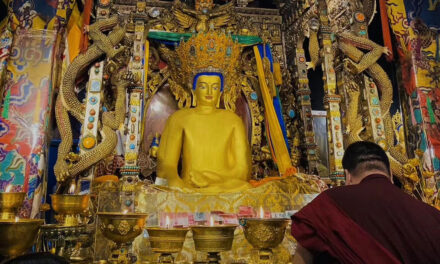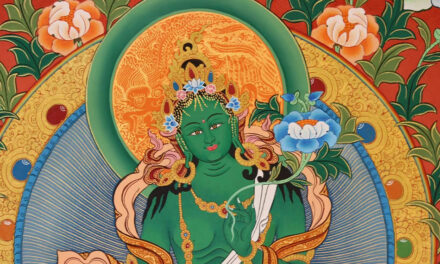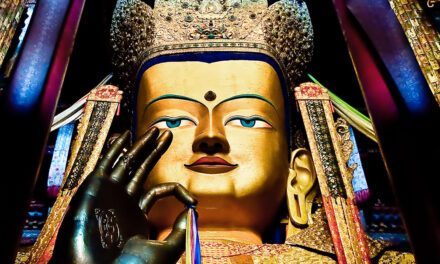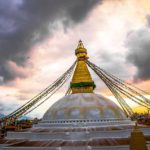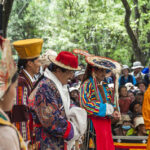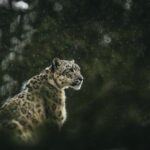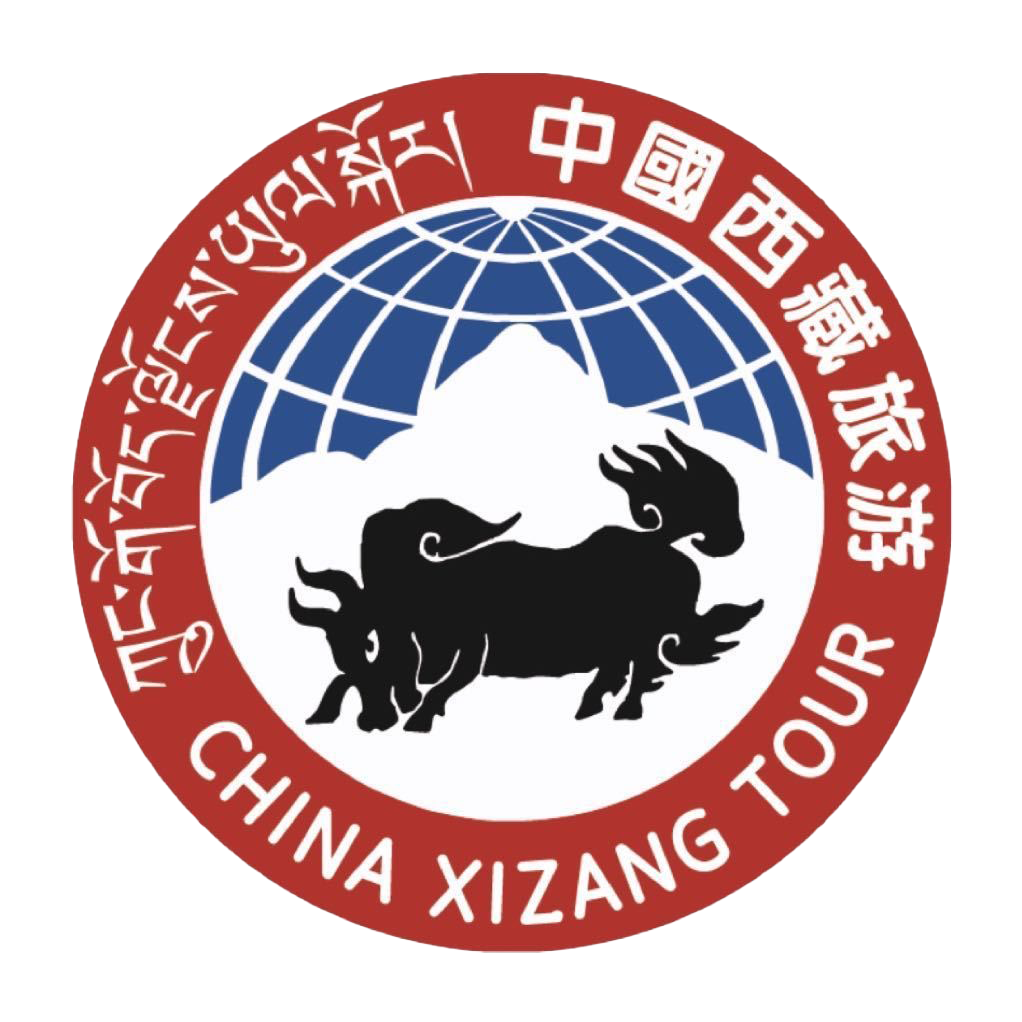Estimated reading time: 4 minutes
Avalokiteśvara is one of the many Bodhisattva you will come to know when you travel to Tibet. Avalokiteśvara is also known as the Buddha of compassion. Since the time prehistoric, The Buddha of compassion is considered the patron deity of Tibet. All the important Tibetan kings and masters like Successive Dalai Lama and Karmapas are considered the emanations of Avalokiteśvara.

Avalokiteśvara appearance and forms
You will find him in different forms such as four-armed, thousand arms and lions roar. You will also find him painted in white colour. This white colour represents Buddha’s pure nature, which doesn’t have strains of desire, Hatred and Ignorance. Though the Chinese have a tradition of depicting him as a famine figure, Tibetan depicts him as a male figure.
His four-armed form represents unlimited virtues: limitless love, limitless compassion, limitless joy and limitless equanimity.
The thousand-armed and thousand-eyed form represent the infinite perception of suffering and unconditional help to those caught in the cycle of existence.
Yet in both form, four is the same. Following are what these four arms represent.
Two hands at his heart hold a Jewel. This Jewel symbolises Universal love and compassion. It shows that in whatever way he manifests to benefit beings, his mind’s quality is never separate from the all-pervasive state of primordial wisdom.
His right hand hold beads. It symbolizes there is no one moment when Avalokiteśvara does not benefit from being. He is continuously benefiting sentient beings and turning the wheel of enlightened activity as steady as the movement of counting the beads.
His left hand hold a lotus flower. The flower symbolizes the act of benefiting others. He always manifests with wisdom in required forms as necessary, like mental capacities, circumstances, and aptitudes of each sentient being.
There is no much information about his lion’s roar form as it is scarce to see one.
Origin of Avalokiteśvara
Many aeons ago, many aeons ago, and a monk was meditating in the Himalayas for many years. As he got closer to achieving full enlightenment, he was getting a blissful experience as he had never felt. Yet, he could hear the scream of many being in the distance. When he looked down, he found the endless number of suffering in an endless circle of Samara. Upon seeing this, he thought, how I could achieve enlightenment and leave without helping them.
When he took a vow that he would help all achieve enlightenment and himself would be the last of all the sentient beings to achieve enlightenment, he also vows his body to break into thousands of pieces if he would give up on his vow. Following this vow, he works so hard to help being liberated from sufferings. Yet to his disappointment, he saw a lot more falling back into the cycle of Samara. He was so tired and is on the verge of giving up, his body scattered into thousands of pieces.
These thousand pieces of his body became his eleven head and thousands of arms and eyes. In his new form now, he can see into ten different directions and benefit thousands of being at a single time.
After seeing the endless number of suffering and more event falling back into the realm of endless suffering, he cried out tears of compassion as the tears fell to the ground, two lotuses spring up. From each of these emerged a form of the female Bodhisattva Tara, one white and the other green. Tara (dolma in Tibetan) means the Saviouress, the One Who Carries Across the Ocean of Samsara. The two Taras pledged to be Chenrezig’s sisters in dharma and to help him bring beings to enlightenment.
Most prominent Avalokiteśvara Images in Tibet
Every monastery in Tibet has images of Avalokiteśvara and different deities of Tibetan Buddhism. But out of all following, few statues are well known for their own legendary
- Lokiteśvara of Potala Palace, this statue was brought to Tibet by King Songtsen Gampo in his Mediation.
- Pearl Embroidered Thangka of Avalokiteśvara in Traduk temple. This Thangkha is said to be hand Embroidered by Princess Wencheng during her stay in the same monastery.
- Avalokiteśvara in Jokhang temple. This statue is said to be self-arisen during the construction of the Temple in the Seventh century.
- Avalokiteśvara statue in Samye monastery is the largest historical statue of Avalokiteśvara.
- Thukje Chemo Statue of Sera Monastery. This statue is self risen at the very place of the monastery.
You can read more Tibet travel guide from this link or visit our travel agency website: https://itibettravel.com.
Recommend Reading.


